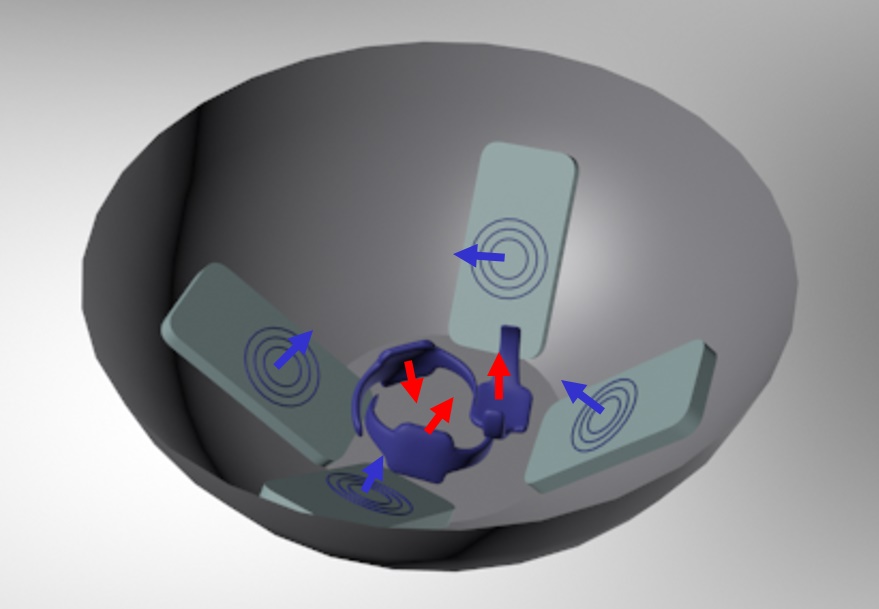RESEARCH
Omnidirectional Wireless Power Transfer for Portable Devices

In this paper, a numerical model and a simulation platform are built to evaluate the flux di-rection of omnidirectional wireless power transfer systems. The omnidirectional wireless power transfer platforms proposed by Intel and City University of Hong Kong are state-of-the-art solutions. With numerical model and FEA simulation tools, the flux direction of these two state-of-the-art platforms are evaluated. Unfortunately, there is no omnidirectional flux in the bottom of the two charging platforms.
The flux direction preference for portable devices is shown in Figure 1(a). For mechanical reasons, a small portable device will drop into the bottom of charging platform. Since the orien-tation is very flexible for small portable devices, omnidirectional flux direction is preferred in the bottom. On the other hand, a planar device can only lay on its side face. Therefore, flux perpen-dicular to the surface is preferred for planar devices. A new transmitter coil structure to achieve omnidirectional flux in the bottom and perpendicular flux on the side face is proposed, as shown in Figure 1(b). With this new coil structure, the device can be simply dropped to the platform and charged efficiently.
For the proposed transmitter coil structure, it's easy to understand flux is perpendicular to the side face. On the other hand, the omnidirectional flux distribution in the bottom of the pro-posed transmitter coil structure can be verified by simulation and the numerical model. Figure 2 shows the flux distribution in the bottom at different times.






















































































